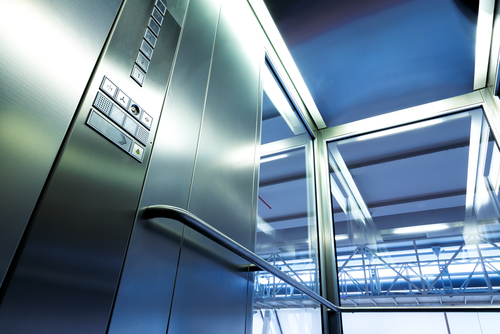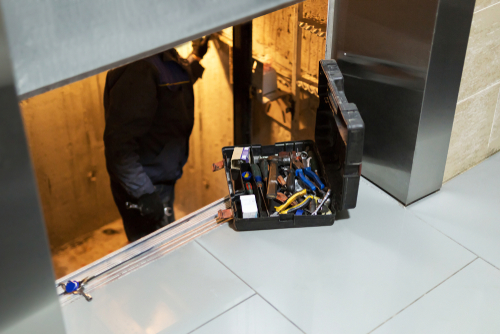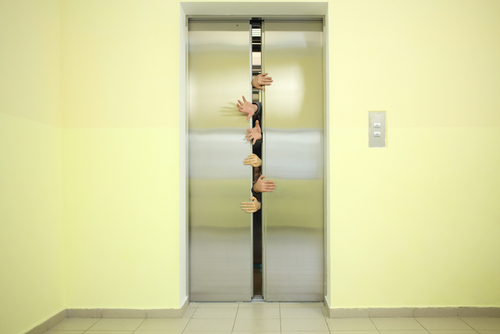
Importance Of Lift User Education
March 27, 2023
The High Costs of Ignoring Lift Maintenance
June 21, 2023The Ultimate Guide to Improving Efficiency Of Lifts

The Ultimate Guide to Improving Efficiency Of Lifts. Lifts are a crucial part of modern life. They save us time and energy, making it easy for us to move between floors in buildings. However, they can also cause frustration when they break down or take too long. In this article, we will discuss ways you can improve the efficiency of lifts.
The impact of improving lift efficiency goes beyond just saving time and energy for building occupants. It can also lead to cost savings, increased safety, and enhanced overall building performance.
Lifts or elevators are an integral part of modern buildings. They make it easy for people to move between floors, especially in high-rise buildings. However, inefficient lifts can cause significant delays and inconvenience for users.
Benefits of Improved Efficiency Of Lifts

Cost Savings
By reducing downtime caused by breakdowns or repairs, you save money on maintenance costs while prolonging the lifespan of your lifts’ equipment. Energy-efficient systems also reduce electricity usage, lowering utility bills over time.
Increased Safety
Regular lift maintenance checks ensure that all critical components are functioning correctly and replaced if necessary before they cause significant problems that could compromise passenger safety or damage property in case an accident occurs. Proper usage practices reinforce safe behavior among users when using lifts, reducing accidents due to misuse or abuse.
Improved Building Performance
Efficient elevator operation results in better building flow management by ensuring smooth movement between floors with minimal wait times for passengers, thus increasing convenience and positively impacting tenant satisfaction levels.
How To Improve Efficiency Of Lifts? The Ultimate Guide

Regular Maintenance
One way to improve lift efficiency is through regular maintenance checks by professionals. These checks ensure all parts function correctly and replace worn-out components before they fail.
Regular maintenance should include inspections on control systems such as door sensors, emergency stop buttons, and interlocks, as well as mechanical equipment including ropes/cables (if applicable), hydraulic pumps or motor/gearboxes, etc., lubrication points so that the lift operates smoothly without unnecessary friction which could lead to wear-and-tear over time.
Regularly doing these checks helps reduce downtime due to unexpected breakdowns while prolonging the lifespan of your lifts’ equipment. Any issues identified early enough would be fixed promptly before escalating into more significant problems requiring costly repairs or replacements.
Upgrade Your Lift System
Another effective way is upgrading older lift systems with newer ones featuring advanced technology like intelligent controls and energy-efficient components. Such upgrades can help reduce operating costs, improve ride quality, and increase the lift’s lifespan.
For instance, intelligent controls allow lifts to operate more efficiently by optimizing travel patterns while reducing passenger wait times. These systems also enable remote monitoring of critical lift components such as motors and sensors so that any issues are detected early enough before they cause significant problems or downtime.
Energy efficiency is another essential feature of modern lifts. This involves using low-energy lighting options like LEDs instead of traditional bulbs, which consume much power over a prolonged period; streamlined motor designs that use less electricity; and regenerative drives in systems with excess kinetic energy from stopping or slowing down the lift is converted into useful electrical power.
Proper Usage
Proper usage is vital in improving your lifts’ efficiency because it reduces wear and tear caused by misuse or abuse from users who do not follow appropriate guidelines on using them correctly.
Improper use causes delay and inefficiency. Avoid holding doors open unnecessarily as this increases waiting time, making other passengers wait longer before reaching their destination floor. Also, avoid pressing multiple buttons unnecessarily; instead, choose your desired floor button only once.
One way you can promote proper usage is through signage indicating standard practices such as maximum capacity limits per floor level, no jumping inside the cab, keeping doors clear when closing, etc., reinforcing these rules with regular training sessions for personnel responsible for running elevators ensures compliance with safety standards across the board.
Optimal Loading Capacity

Overloading lifts can cause significant delays and increase the risk of malfunctions or breakdowns. It is essential to adhere to the recommended weight capacity for each charge, usually indicated on a sign inside.
Also, users should distribute their weight evenly when entering and exiting lifts. Uneven distribution can affect the balance of the charge and cause it to stop suddenly or move slower than usual.
Improved Design
The physical design of lifts also plays a crucial role in improving their efficiency. Designers have improved efficiency by installing two side-by-side lifts with separate controls serving different floors.
Besides, changing from hydraulic systems (which require large machine rooms) found commonly in older buildings into more modern traction-based systems eliminates such wasted space.
The Ultimate Guide to improving Efficiency Of Lifts – Conclusion

To conclude, implementing the above mentioned measures can improve lift efficiency and operate efficiently while reducing downtime due to breakdowns or repairs. Improving your elevator system efficiency is a collaborative effort that requires the commitment of building owners, lift maintenance professionals and users.
Regular maintenance checks, upgrading to newer systems with advanced technology, and promoting proper usage will go a long way in achieving this goal. So take action today and improve your lifts’ efficiency!




